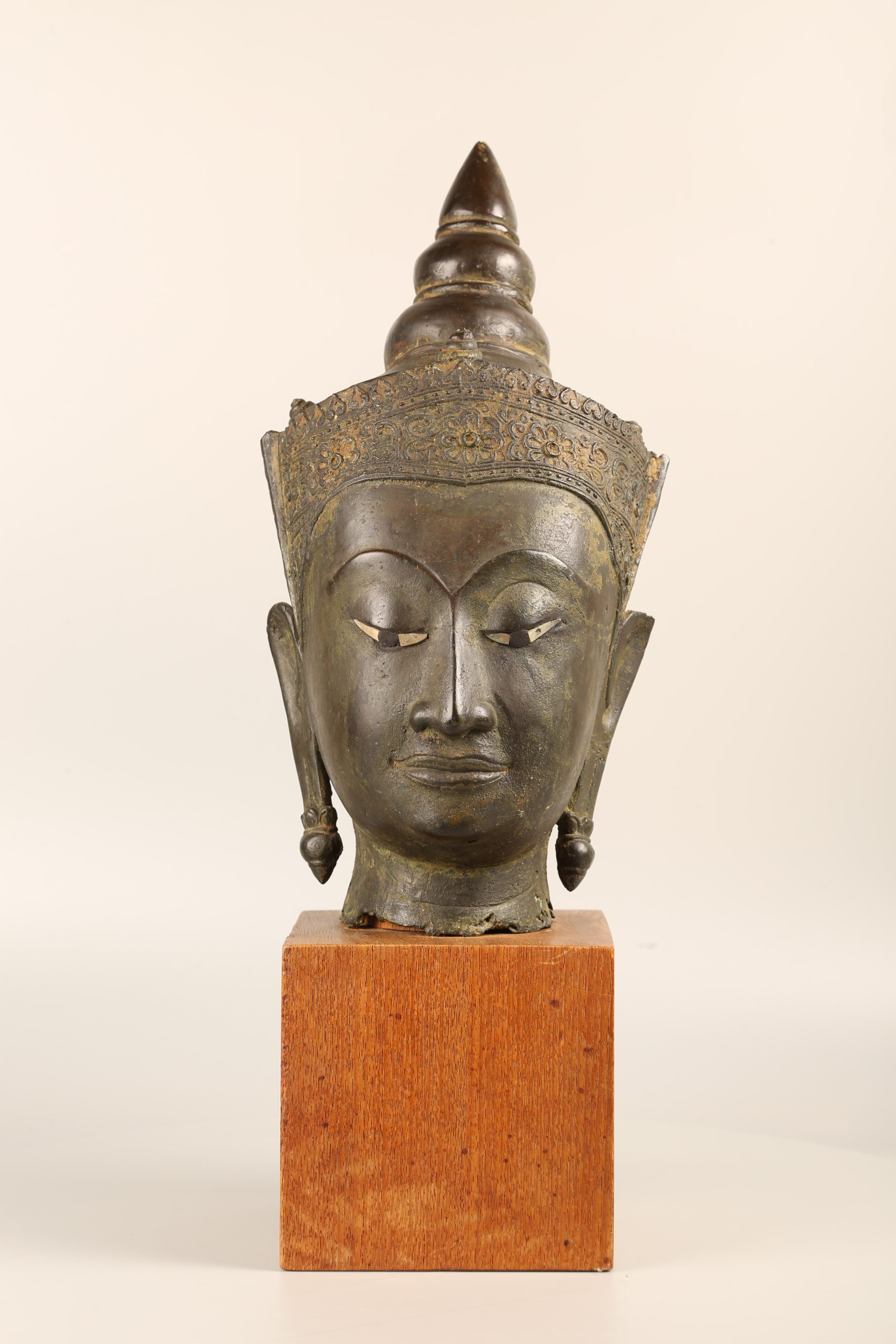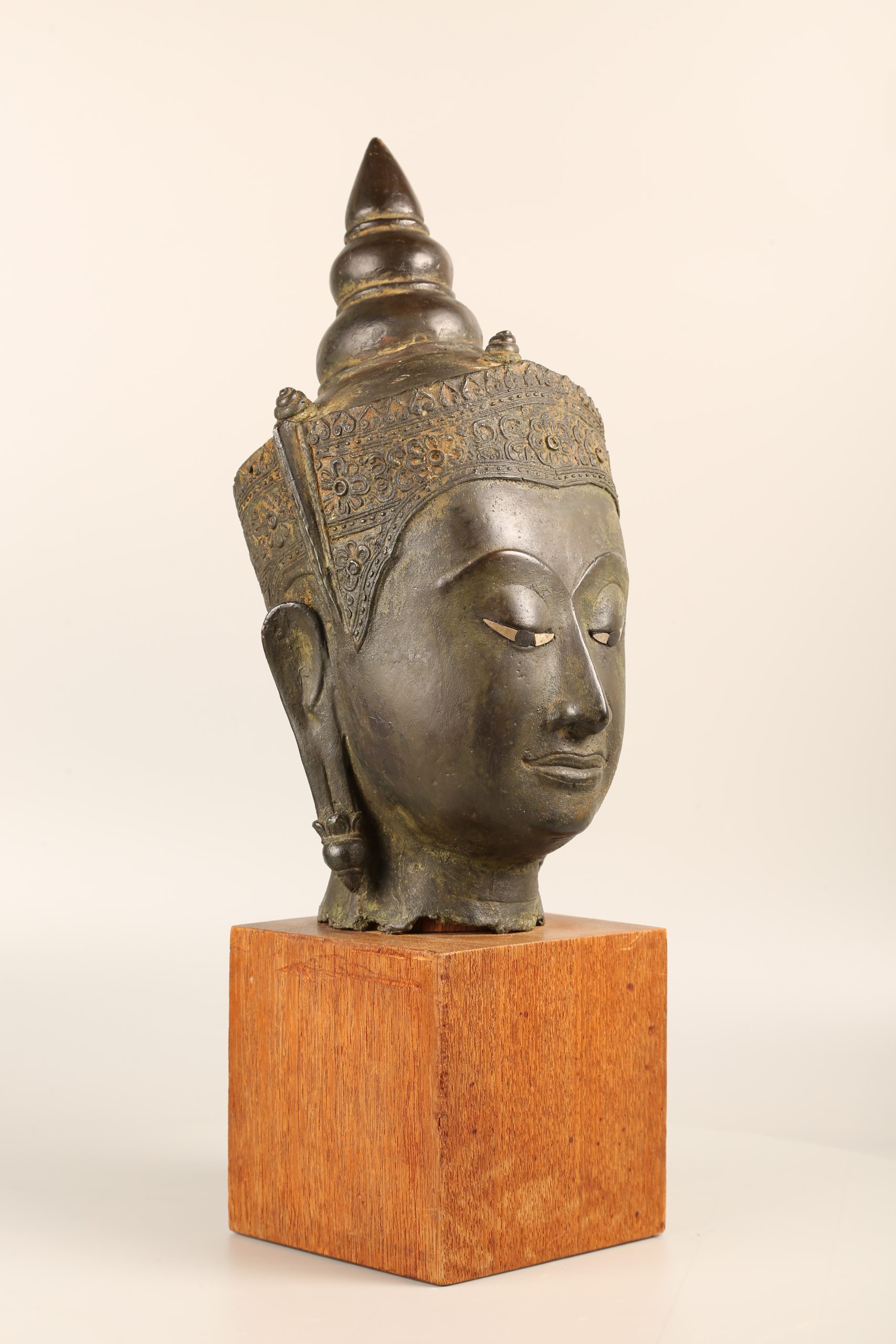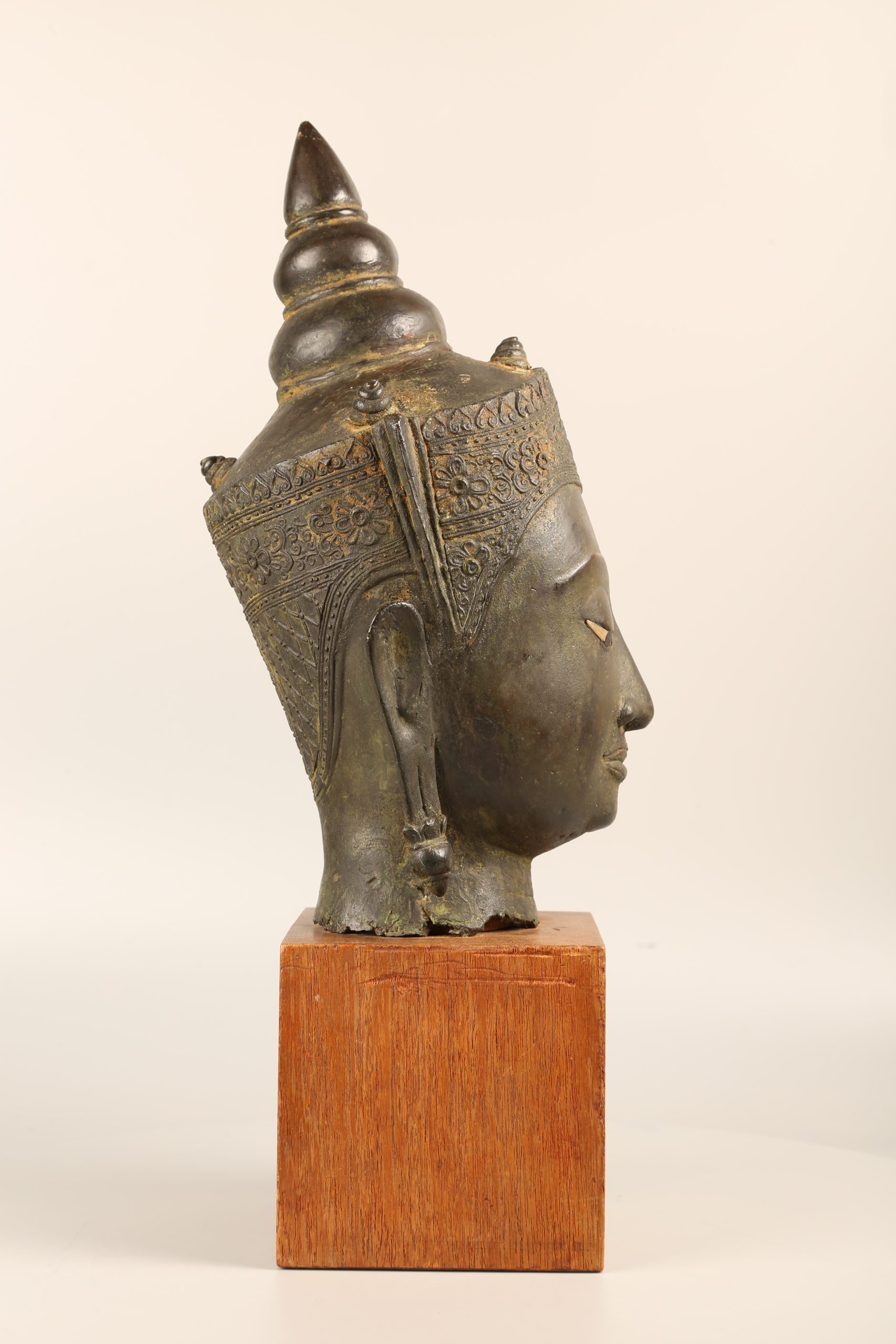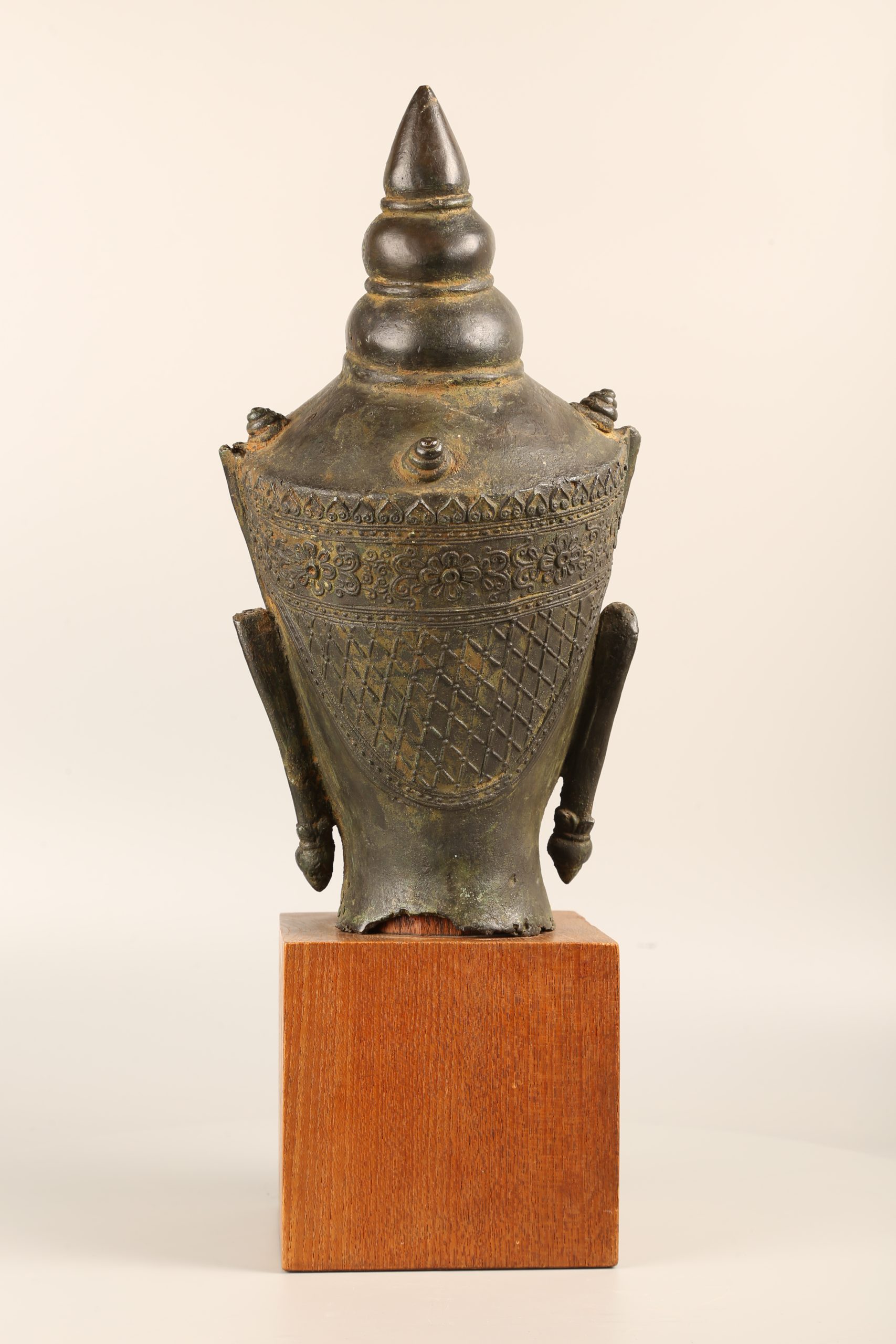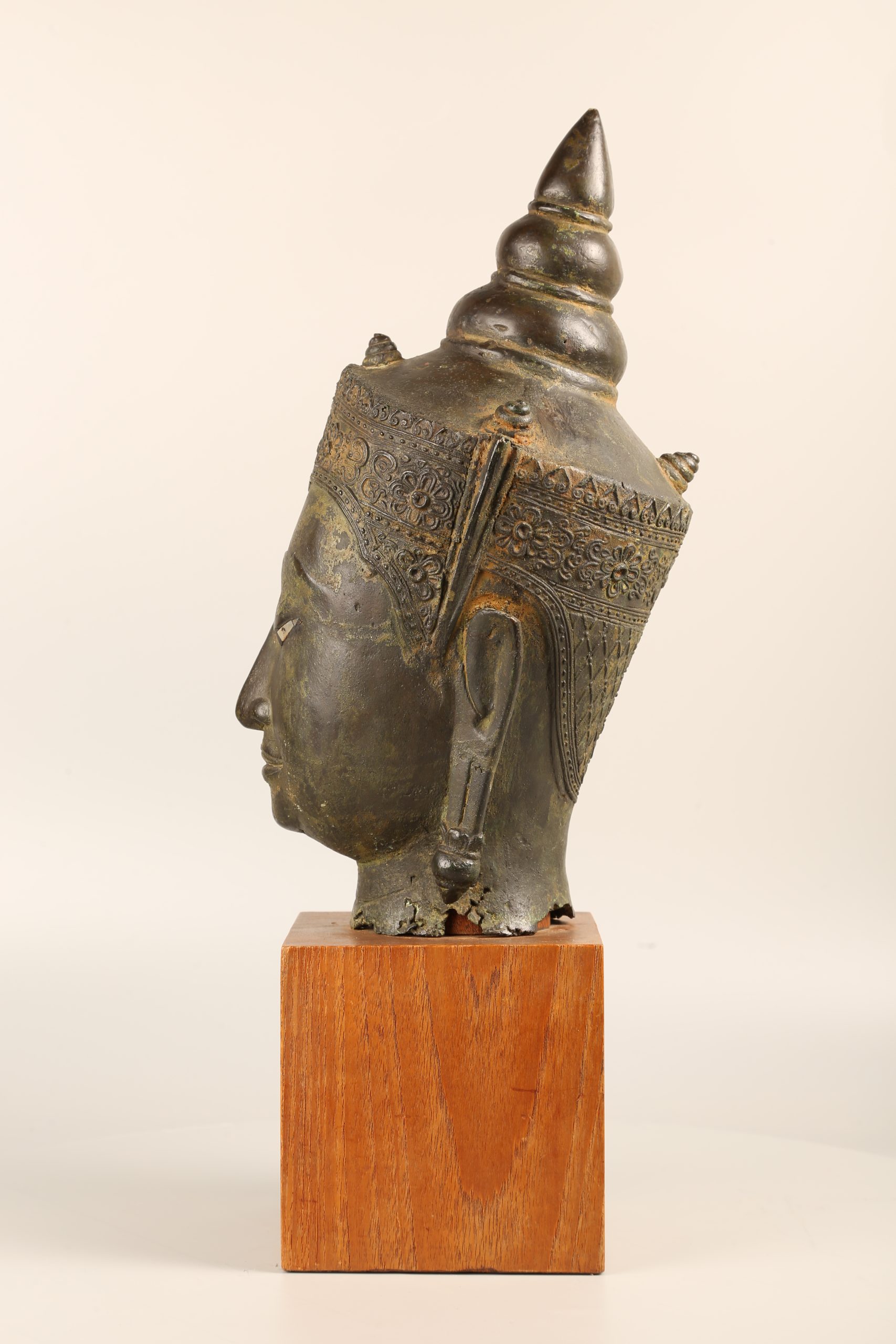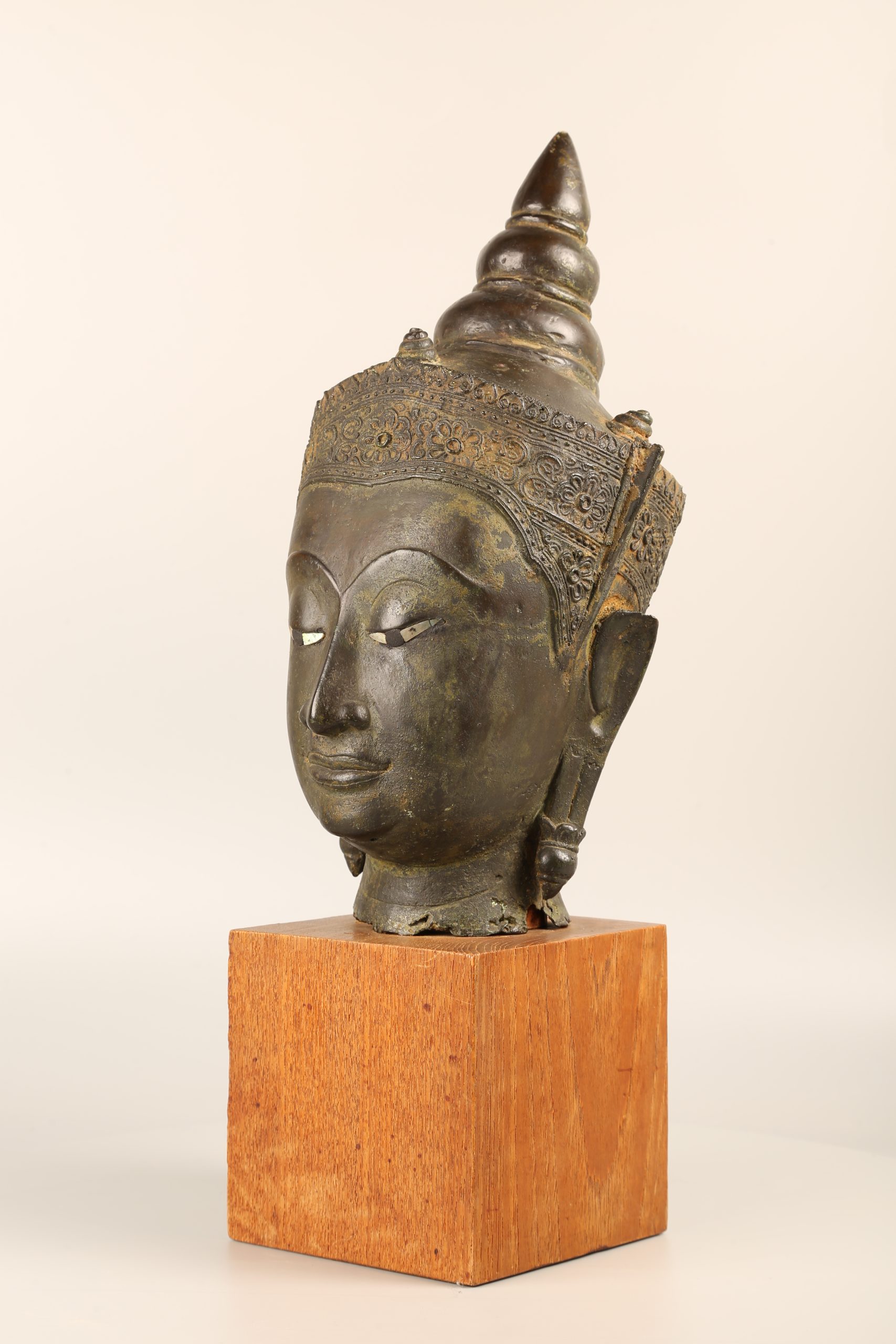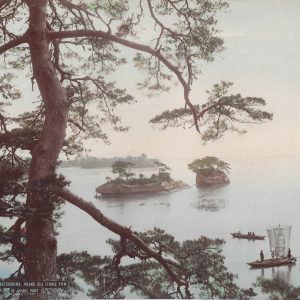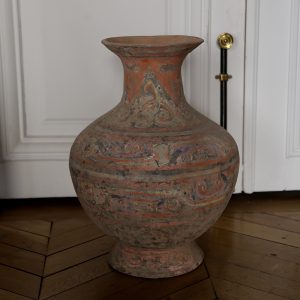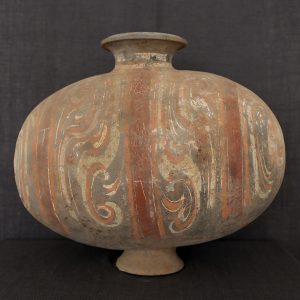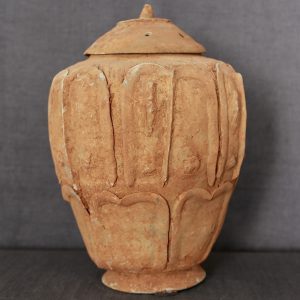Crowned Buddha head
Bronze
Thailand
18th century, Ayutthaya Kingdom
Height : 33 cm
Description
In 1350, a prince of U-Thong founded Ayutthaya, took the name of Rāmathibodi 1 and united Thailand, then called Siam. Ayuthya remained the capital until it was taken by the Burmese in 1767.
This depiction of the crowned and adorned Buddha Śākyamuni is that of the ‘universal ruler’ (cakravartin). Although the dominant current of Buddhism in the Ayutthayā kingdom is that of Theravada, the strictest and most sober doctrine, meaning “the Tradition of the Ancients”, this iconography is nonetheless imposed as in the other currents of Buddhism. It even became emblematic of the Ayutthayā period, during which it underwent great development, both for conceptual and pietistic reasons and for its extremely decorative character.
The face perpetuates, while modifying and softening them, the characteristics of the Sukhothai style. Thus the nose is less pronounced, the mouth more smiling and the lips fuller. The hair is braided into a high bun at the top of the head, behind a crown with rich floral and geometric decoration that unfolds on either side of small cabochons that were once set. Her large, half-closed eyes are inlaid with mother-of-pearl, giving preciousness to the representation and strength to her gaze.
A certain tendency towards decoration permeates Ayutthayā’s art from the beginning. This trend became more pronounced over the centuries. The great finesse of the face, the marked relief of the diadem, the stylisation of the ears with their strong arching and the multiple inlays give this head a particularly amiable and seductive appearance. This decorative aspect triumphed in the Bangkok period after 1782.

